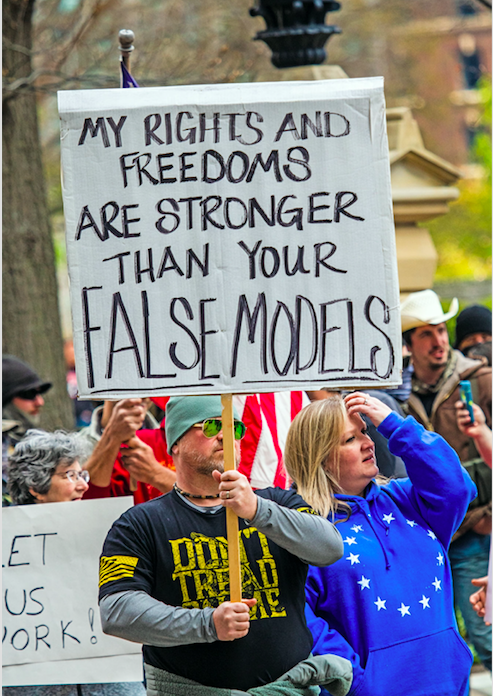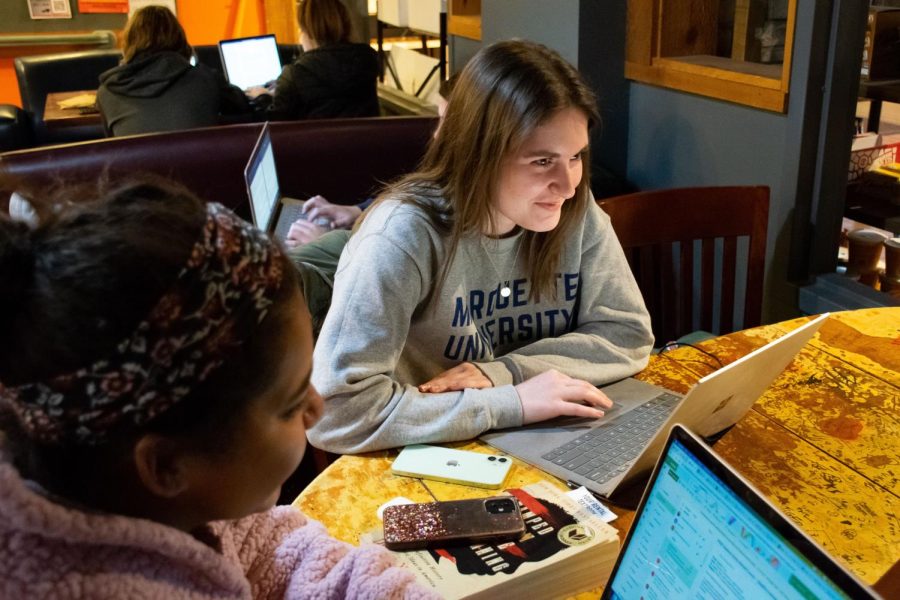Across the country, protests have emerged in response to COVID-19. From Maryland to California and many states in between, people have taken to the streets against stay-at-home orders in their respective states, ignoring social distancing guidelines in the process.
Recently, such a protest occurred in Wisconsin.
Last Saturday, nearly 1,000 Wisconsinites gathered on the sidewalk of Bluemound Road in Brookfield to protest Gov. Tony Evers’ recent extension of the state’s “Safer at home” order from April 24 to May 26. Among protestors’ worries were stagnant economic conditions and the potential risk public safety restrictions have posed or may pose to civil liberties.
While these concerns are valid and citizens have the constitutional right to assemble, that does not mean protesting is a responsible course of action in the current circumstances.
Amid the ongoing pandemic, large protests put participants and their communities in harm’s way and will likely lead to extended safety regulations since they will inevitably exacerbate the spread of COVID-19.
According to the World Health Organization, the virus is primarily transmitted through small particles called “respiratory droplets.” These droplets travel through the air three to four feet around a carrier and infect others nearby. Consequently, any event that packs large crowds close together is a clear hazard.
During the recent Brookfield protest, some demonstrators took protective measures by either keeping their distance, wearing masks or remaining in their vehicles. However, the majority of individuals “stood shoulder to shoulder,” according to the Milwaukee Journal Sentinel.
This kind of behavior not only threatens further spread of COVID-19, but it is counterintuitive.
In an April 2o news release, Evers asserted that any efforts to reopen the local economy would not begin until there is a decrease of COVID-19 cases and influenza-like symptoms within the state over a 14-day period, meaning that spreading the virus through large gatherings would only prolong restrictions.
This approach is not exclusive to Wisconsin. In fact, the White House, in collaboration with the Centers for Disease Control and Prevention, released its Guidelines for Opening Up America Again with identical requirements.
While Wisconsin seems to have passed its projected peak weeks ago in terms of daily resource use, hospitalizations and deaths, according to current Institute of Health Metrics and Evaluations data, this does not warrant a sudden departure from social distancing.
The IHME doesn’t recommend a relaxation of social distancing in the state until May 18 at the earliest, and that is with adequate “containment strategies” like testing, contact tracing and limiting gathering sizes.
Although present social and economic restrictions can be mentally and fiscally challenging, abandoning them to attend a crowded protest isn’t worth risking your life or the lives of others over.
Voicing your opinion is an undeniably important part of provoking change. However, in the midst of a pandemic, protesting simply isn’t a safe or productive option to do so.
Luckily there are plenty of digital platforms to spread your message and with everyone already at home and online, these platforms are more popular than ever. So if you’re itching do some activism during quarantine, I recommend starting a digital petition, beginning a blog or tweeting your mind.
This story was written by Nicole Laudolff. She can be reached at nicole.laudolff@marquette.edu.






